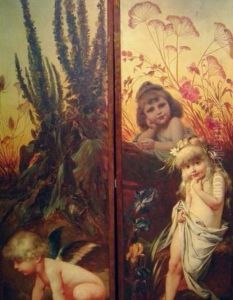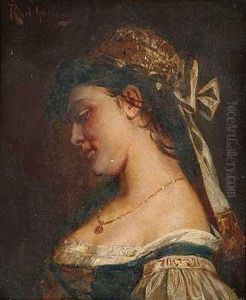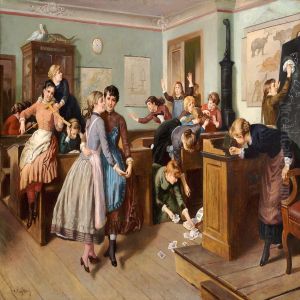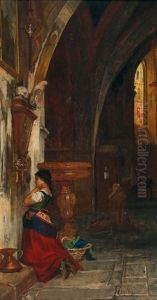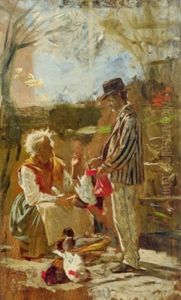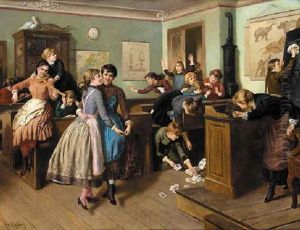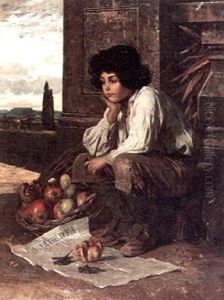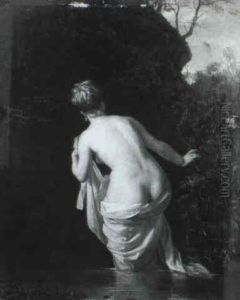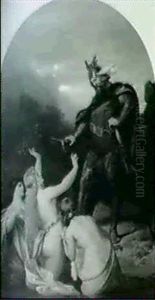Rudolf Geyling Paintings
Rudolf Geyling was an Austrian artist, born in 1839 in Vienna, Austria. He was a multifaceted artist, known primarily for his work as a painter, glass painter, and designer. Geyling's contributions to the art world are marked by his pioneering work in the revival of stained glass art in Austria during the 19th century, a period when interest in medieval glass painting techniques was rekindled across Europe.
Rudolf Geyling's early life was immersed in an environment conducive to artistic development. He pursued his art education at the Academy of Fine Arts Vienna, where he honed his skills and developed a keen interest in historical and religious themes, which would later become prevalent in his stained glass works. His career took a significant turn when he established the 'Geyling's Erben' (Geyling's Heirs) workshop, which became renowned for its high-quality stained glass productions. The workshop not only produced works for religious buildings but also for secular ones, contributing significantly to the architectural beauty of the Austro-Hungarian Empire during the late 19th and early 20th centuries.
Geyling's influence extended beyond the boundaries of Austria. His works were exhibited in several international expositions, where he gained recognition for his artistic prowess and innovative techniques in glass painting. His designs often featured intricate details, vibrant colors, and a harmonious blend of Gothic and Art Nouveau elements, reflecting the transitional period of art during his lifetime.
Throughout his career, Rudolf Geyling collaborated with architects and artists, contributing to the decorative elements of many buildings, including theaters, churches, and public spaces. His dedication to the craft of stained glass and his ability to adapt to the changing tastes of art over the decades made him a pivotal figure in the Austrian art scene of the 19th century.
Rudolf Geyling passed away in 1904, leaving behind a legacy of artistic achievements that continue to be celebrated. His work remains an integral part of Austria's cultural heritage, with many of his stained glass windows still adorning various buildings, standing as a testament to his artistic vision and craftsmanship.
